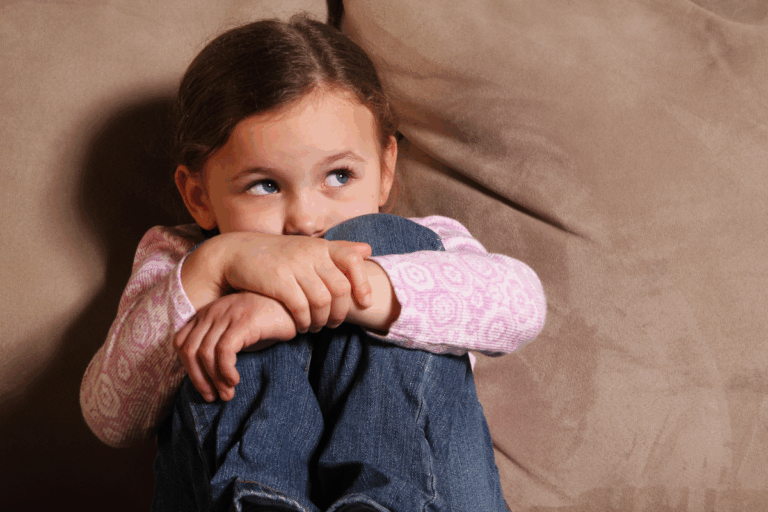Understanding Emotional Dysregulation In ADHD: Why Kids Struggle With Big Emotions

Stefanie Solomon

When a child with ADHD has a sudden outburst, it can feel confusing: the intensity often seems out of proportion to the trigger, and the child may calm quickly yet still carry shame afterward. Those moments are not simply “bad behavior.” They usually reflect difficulty regulating emotion — a core and often overlooked part of the ADHD profile that affects family life, friendships, and school.
What Is Emotional Dysregulation In ADHD?
Emotional dysregulation means difficulty managing the speed, intensity, and duration of emotional reactions. In children with ADHD this often looks like a quick temper, low frustration tolerance, long recovery after upset, sudden tears or anger, and mood swings that interfere with daily functioning. These are not character flaws — they are expressions of brain and skill differences that can be taught and treated.
Why it matters: emotional dysregulation is a major contributor to the everyday impairment experienced by many with ADHD — it affects relationships, learning, and self-esteem.

The Brain Basis — Why Emotions Feel So Big
Three brain-level ideas help explain emotional dysregulation in ADHD:
- Top-down control is weaker. The prefrontal cortex (PFC) — the brain’s “brake” for impulse and emotion — shows delayed or weaker development and connectivity in ADHD. That makes it harder for a child to slow or reframe an emotional reaction in the moment.
- Limbic reactivity can be stronger. Regions involved in generating emotion (amygdala, limbic circuits) may react more strongly to frustration or rejection, producing bigger emotional spikes.
- Neurochemical modulation (dopamine/norepinephrine) matters. The neurotransmitter systems that support attention and top-down regulation overlap with those used to regulate mood — which helps explain why attention, impulse control, and emotion regulation are often linked in ADHD.
Put simply: the parts of the brain that notice, react to, and then calm emotions are not synchronized in the way they are for many neurotypical children. That mismatch is a biological reason why emotions can feel overwhelming and unpredictable.
How Emotional Dysregulation Shows Up Day-To-Day
Common patterns parents and teachers report:
- Quick temper over seemingly small triggers (a lost pencil, being told “no”).
- Sudden crying or rage that ends abruptly, leaving the child embarrassed.
- Persistent irritability or low mood between episodes.
- Overreaction to perceived rejection (rejection sensitivity).
Difficulty using words to describe feelings — so feelings come out as behavior.
These patterns are often worse when the child is tired, hungry, overstimulated, or under stress — exactly the times when the brain’s regulatory resources are lowest.
Practical Coping Strategies Families And Schools Can Use
Parents and teachers need tools that work in the moment and tools that build capacity over time.
In-the-moment supports:
- Name and label the feeling calmly: “You look really angry. I’m here to help.” Labels help the brain shift from reactivity to regulation.
- Short de-escalation scripts and exit plans: predictable language (“Let’s take a minute”) and a quiet place to regulate.
- Simple sensory grounding (deep breaths, squeezing a stress ball, 5-4-3-2-1 grounding) to reduce physiological arousal.
- Avoid punishment in the heat of the moment. Consequences are more effective when the child is calm and can learn from them.
Skill-building (over weeks/months):
- Emotion coaching with parents: noticing feelings, validating, labeling, and problem-solving together.
- Structured routines that reduce unpredictability (predictability reduces emotional spikes).
- Skills groups that teach coping strategies (calming techniques, problem-solving, social skills).
- Mindfulness and breathing practice adapted for children — short, repeated exercises rather than long formal practice.
These approaches reduce frequency and intensity of outbursts and improve a child’s toolkit for future upset.
Evidence-Based Treatments: Medication, Therapy, And Combined Care

What does the research say?
- Stimulant medications (and atomoxetine): beyond improving attention, stimulants can reduce emotional lability for many children and adolescents — measurable reductions in temper problems and emotional over-reactivity has been found with stimulant treatment.
- Psychosocial treatments (CBT, parent training, skills groups, DBT components): structured behavioral parent training and cognitive/skills-based therapies show benefits for emotional and behavioral symptoms. Programs that combine parent coaching with child skills training (emotion regulation, problem solving) tend to be most helpful.
- Combined care (medication + psychosocial intervention) is often the most pragmatic route: medication can lower the emotional intensity enough for a child to learn and practice new skills during therapy or at home.
A note on newer options: digital and blended interventions (apps, therapist-supported online programs) show promise for adolescents, but accessibility and quality vary; they are best used as adjuncts within a broader care plan.
Frequently Asked Questions (FAQs)
Is emotional dysregulation part of ADHD?
Yes. Many children and adolescents with ADHD experience emotional dysregulation — it is widely recognized as a common and impairing feature.
How common are mood swings or outbursts in ADHD?
Estimates vary, but studies report that a substantial portion — from roughly a quarter to about half in some high-symptom groups — show clinically meaningful emotional dysregulation.
Will ADHD medication help emotional outbursts?
Stimulant medications (and atomoxetine for some) often reduce emotional lability for many children, though results can be partial and vary by individual. Combining medication with psychosocial treatment gives the best chance of sustained improvement.
What can parents do right away?
Label feelings, provide predictable routines, teach brief calming strategies, avoid punishment in the heat of the moment, and seek behavioral health professional support if outbursts are frequent or dangerous.
Final Thoughts
Emotional dysregulation in ADHD is common, biologically rooted, and highly treatable with an approach that combines understanding, immediate practical support, skills training, and — where indicated — medication. The goal is not to erase big feelings but to help children and adolescents build the skills and environment they need so big feelings stop getting in the way of learning, friendships, and self-worth.
Responsibly edited by AI
Other Blog Posts in
Animo Sano Psychiatry is open for patients in North Carolina, Georgia and Tennessee. If you’d like to schedule an appointment, please contact us.
Get Access to Behavioral Health Care
Let’s take your first step towards. Press the button to get started. We’ll be back to you as soon as possible.ecovery, together.




